Nigel Freeman on the Legacy of Emma Amos, 1937-2020
We are sad to hear yesterday’s news of Emma Amos’s passing. Emma Amos was a painter, printmaker, weaver and educator—a great artist and innovator who helped broaden greatly American art in the late twentieth century, challenging inequalities in both art and society with a bold figurative message. I would like to remember her life and work as best we can—through the artworks we have handled here at Swann, as they introduced me to her many facets as an artist.
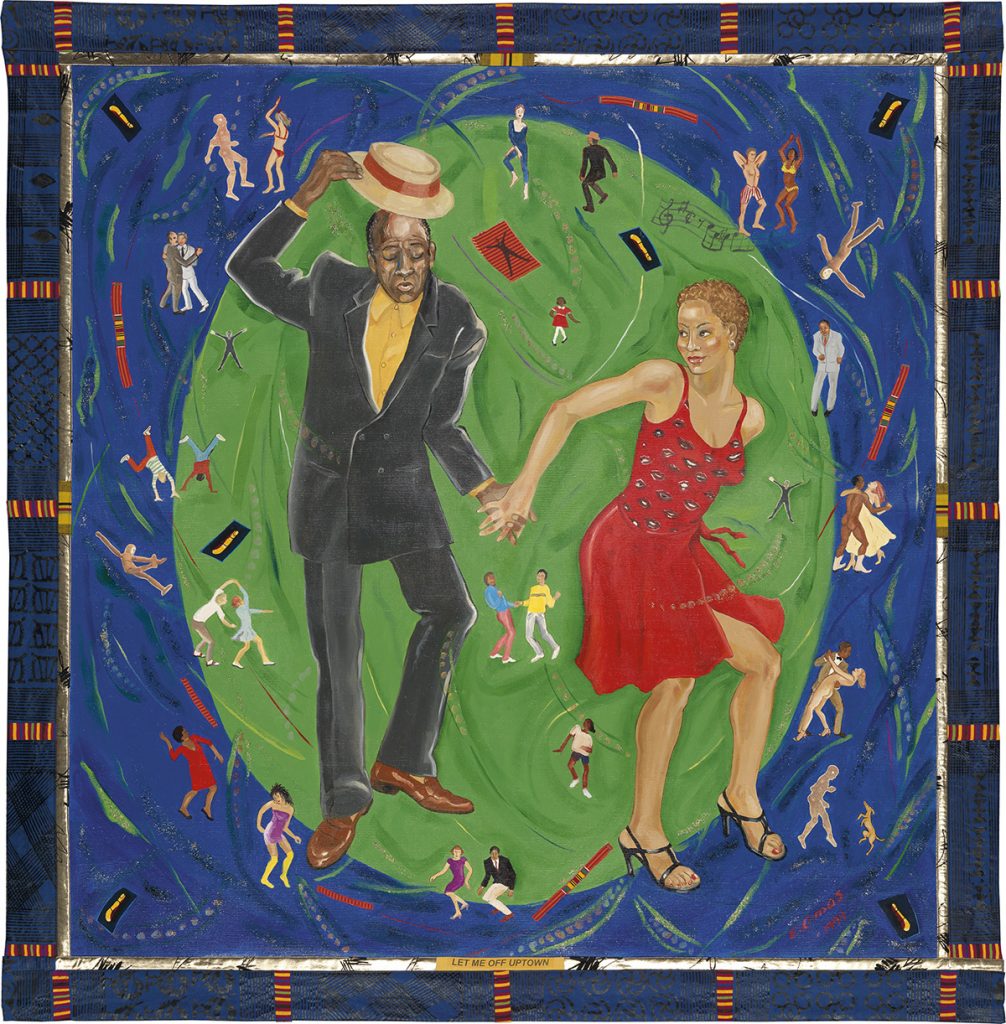
Amos sought to deconstruct traditional representations of race, gender and beauty, and embraced experimental techniques as a painter and printmaker. Born in 1937 in Atlanta, Georgia, Emma Amos pursued her broad interests in art, studying painting, printmaking and textile design at Antioch College in Ohio. During the fourth year of her five-year program, she made the first of two trips to England to study etching at the London Central School of Art, making abstract images in etching and aquatint. By 1960, she had moved to New York, and began working with textile designer Dorothy Liebes. While studying for her masters in art education at NYU, in 1964 Amos became the first female artist to join Spiral, the collective of African-American artists founded by Charles Alston, Romare Bearden, Norman Lewis, and Hale Woodruff.
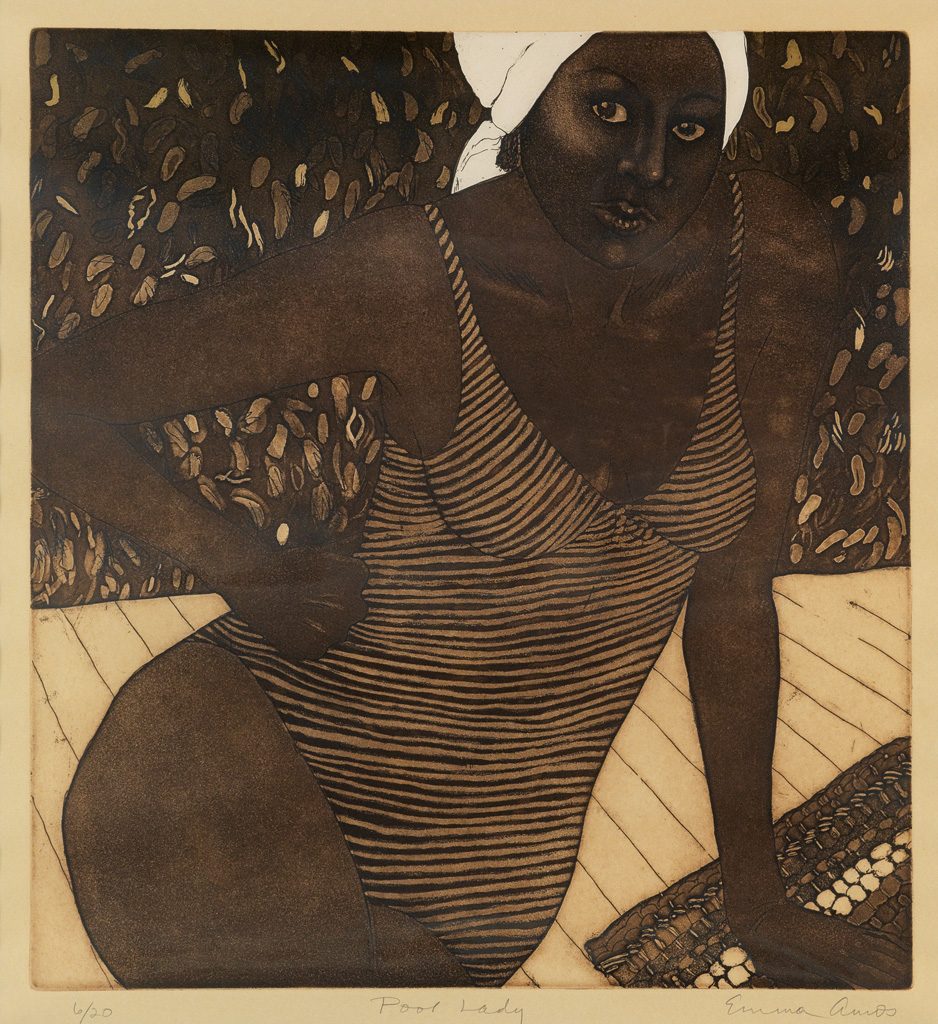
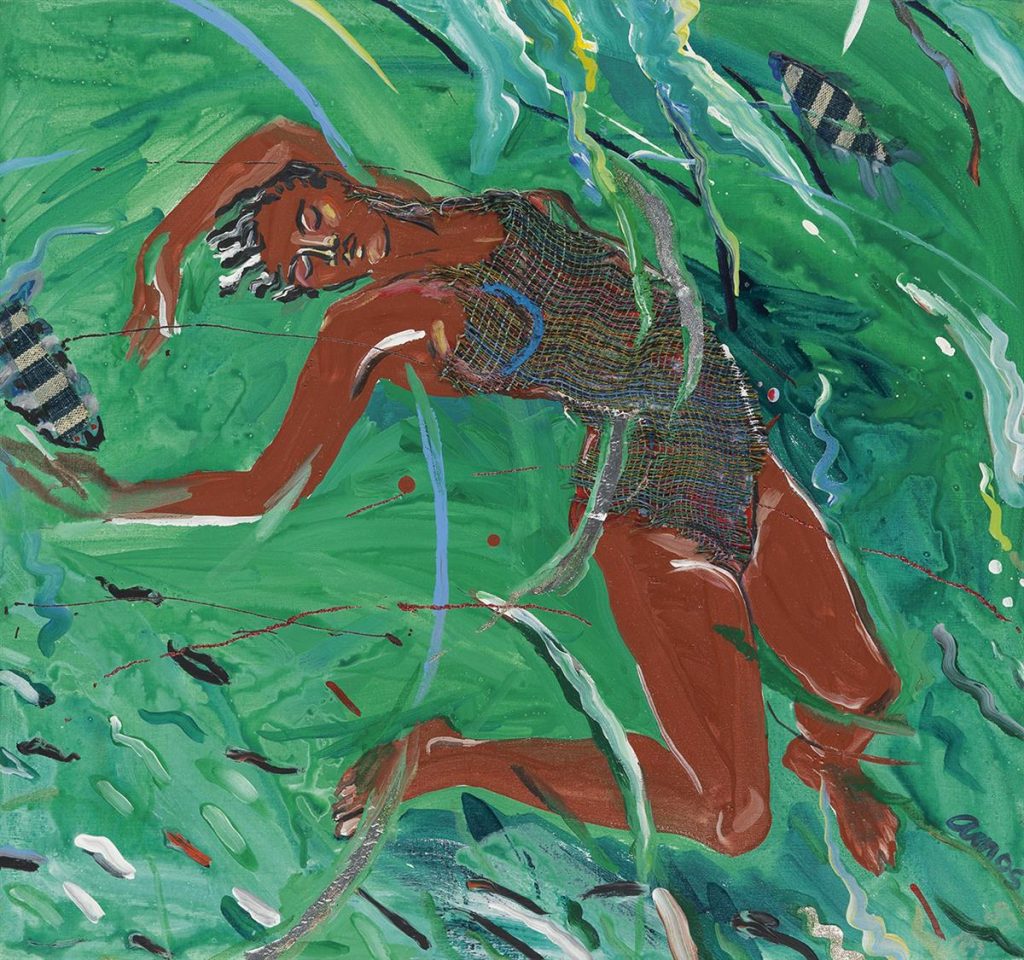
By the early 1970s, Amos developed a feminist aesthetic creating modern portraits centered on women as the subject. She continued to make prints in intaglio at Bob Blackburn’s Printmaking Studio in New York. Amos developed a significant body of work into the 1980s depicting African-American women as heroic figures, and everyday women at leisure, in particular swimming including the etchings Sand Tan, 1980, To Sit, 1981, and the painting Arched Swimmer, 1987. Working with master printer Kathy Caraccio, Amos also developed monotypes with similar collage elements and mixed media as found in her paintings on fabric.
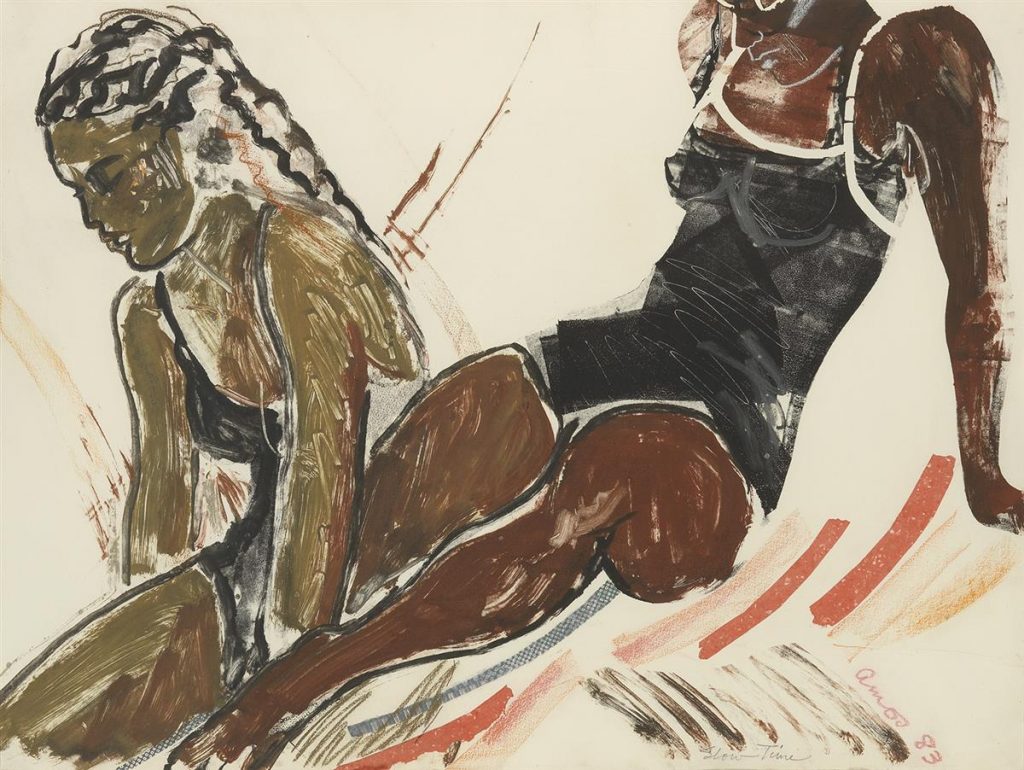
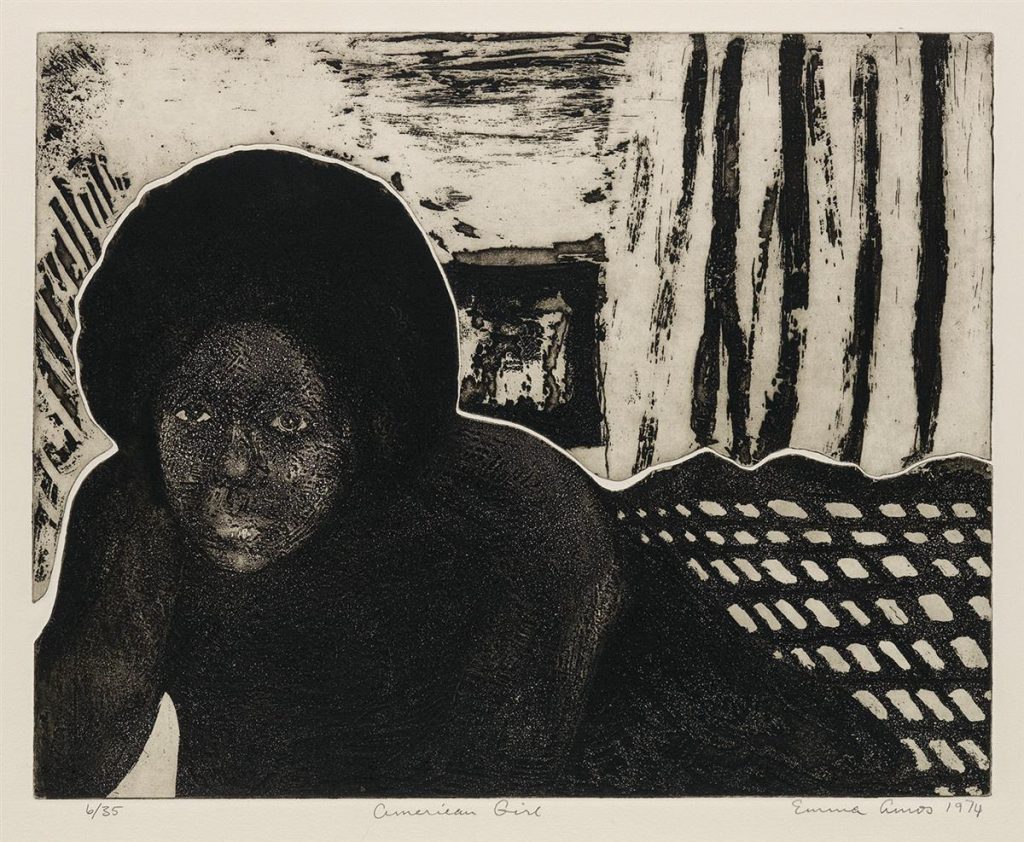
In 1980, when hired as a professor at the Mason Gross School of Art at Rutgers University, Amos developed an important body of fabric paintings. Her combination of non-traditional subjects with non-traditional media helped redefine the representation of African-American women in contemporary art. Emma Amos’ series of paintings on fabric through the late 1990s further celebrated African-American women and culture. With Kente and Adinkra cloth collage, vibrant colors, glitter and gold, her paintings were often joyous celebrations of dance and music, recognizing both the uniqueness and inclusiveness of African-American culture.
In the last five years, Amos had only just begun to receive recognition in institutions and exhibitions, after her decades of accomplishments and contributions. Amos’s paintings have recently been acquired by the Cleveland Museum of Art and Brooklyn Museum, and her artworks were included in the traveling museum exhibitions We Wanted a Revolution: Black Radical Women 1965-1985 and Soul of a Nation: Art in the Age of Black Power. Her first retrospectiveis planned for 2021 at the Georgia Museum of Art.
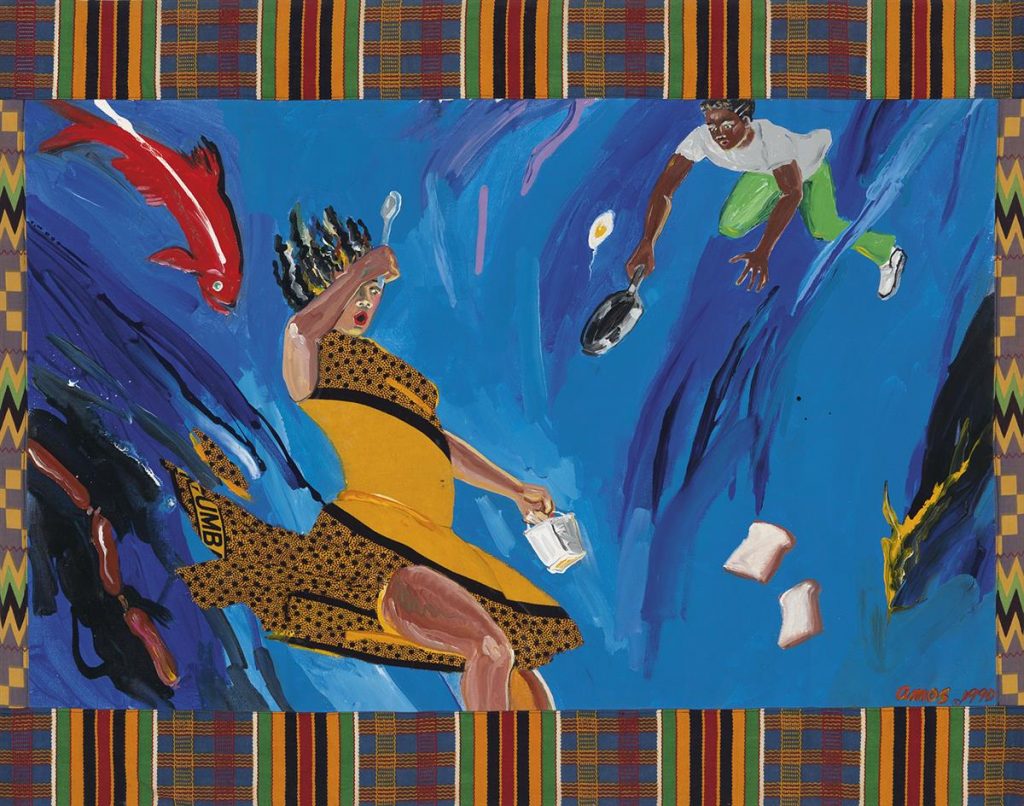
- 0
- Bookmark

Bill Graham, Family Dog, Grateful Dead posters & more go up for bid at Turner Auctions + Appraisals
SAN FRANCISCO, CA.- Turner Auctions + Appraisals will present the sale of vintage posters from Bill Graham,...

Freeman's American Furniture, Folk and Decorative Arts Auctions Demonstrates Successes in American Material
PHILADELPHIA, PA—Freeman’s is pleased to announce the results of its April 27 American Furniture, Folk and Decorative Arts auction,...

Examining Edward Gorey’s Market
Edward Gorey is having a moment. Gorey has had many of these over the years—he was...
